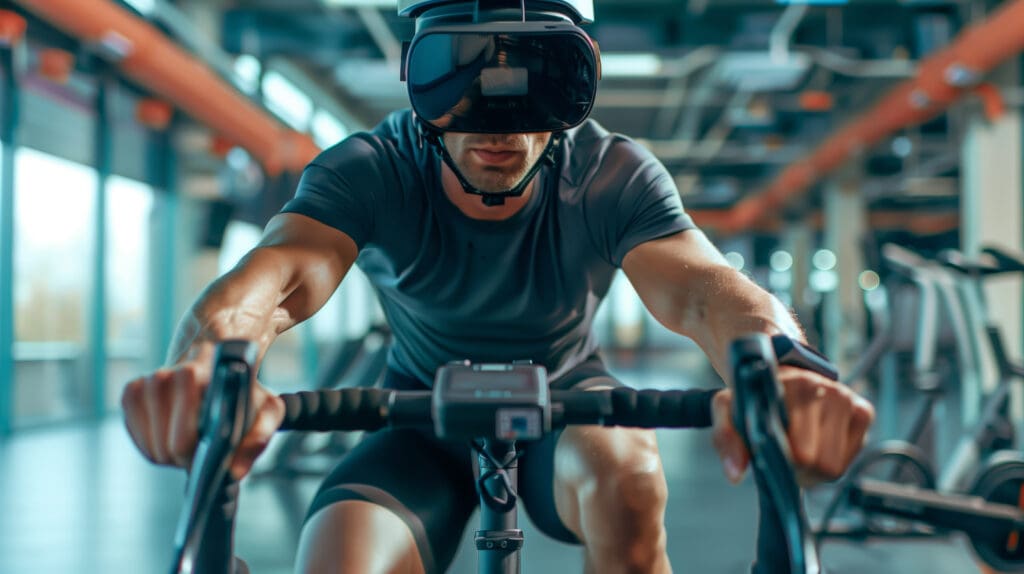Machine Learning Is Now the Competitive Infrastructure of Sport
Victories in high performance sport still unfold on the scoreboard, yet decisive moves now occur in server racks humming behind the arena wall. Data races through silicon, models refine themselves after each rep, and coaching groups adjust practice loads in real time. The artefacts look familiar: taped ankles, stopwatches, grass stains. The machinery underneath is new. Machine learning has passed the point of proof and now functions as the infrastructure that underwrites every serious sports operation. Teams treating artificial intelligence as core capability rather than analytic garnish are building leads traditional workflows can no longer close.
A New Reality for 2025
Game speed climbs every season and the physical envelope of the athlete approaches human biological limits. The next leap forward will not come from tougher training camps but from faster insight cycles. Live skeletal mapping converts a winger’s cut into three dimensional vectors. Edge models compare those vectors to thousands of archived moves, then flag marginal power loss in the inside leg that no trainer could spot by eye. Corrective drills roll out before tightness turns into strain. The era of post event diagnosis is giving way to continuous correction loops that operate during the action itself. This dynamic has altered every department from scouting to ticket sales.
The Hidden Cost of Untapped Data
Every club claims a data strategy, yet half still treat output as static files. Drives fill with GPS exports, medical PDFs, and drone footage before vanishing into folder hierarchies no one revisits under deadline pressure. Siloed storage appears passive but carries hidden cost. It forces parallel staff to rebuild answers from scratch, burns analyst hours, and dulls urgency.
The financial outlay doubles: capital for sensors and wages for people re asking the same questions. Machine learning eliminates rework by fusing streams into a single knowledge graph that any department can search in seconds, turning dormant assets into live fuel for competitive moves.
Where Human Bottlenecks Stall Performance
Manual tagging, after action reports, and coach intuition once felt sufficient. Today they impose unacceptable drag. Analysts still spend nights chopping footage; by the time clips reach the locker room tactical contexts have shifted. Sports medicine staff grade fatigue by eye, unaware that micro tears and overload signals appeared four sessions earlier in biomechanical logs.
Machine learning addresses these choke points by processing streams continuously and highlighting deviations before humans notice. The benefit is not just speed. Models also remove subjective noise that obscures truth and give decision makers a cleaner signal. Analysts remain vital as context translators, yet their focus shifts from laborious clipping to high value scenario design.
Computer Vision as the Live Tactical Layer
Camera rigs once promised automated highlights. The modern stack delivers full body kinematics in real time. Multi angle arrays feed convolutional networks that reconstruct skeletal position, joint torque, and relative space for every athlete on the surface. Models compare live formations against millions of historical sequences to predict unfolding plays and expose vulnerabilities.
Coaches receive actionable cues seconds after events occur, creating feedback loops faster than a single substitution cycle. Because the framework is model driven the same intelligence layer recalibrates for hockey rinks, soccer pitches, and basketball courts, enabling cross sport learning that outstrips any human video coordinator.

Wearables and IoT: From Gimmick to Operating System
Heart rate straps and GPS pods once served marketing photos more than performance science. Modern wearables now capture eccentric concentric force patterns, sweat electrolyte composition, and neural firing efficiency.
Embedded microprocessors push data to edge nodes in the training facility where local inference engines flag degradation before soreness appears. Recovery protocols auto adjust with granular precision: sleep schedule modifications, nutrition macros, and training volume tweaks push to athlete apps without staff intervention.
Coaches stop guessing closeout fatigue on back to backs. They receive quantified readiness scores that guide lineup rotations with evidence rather than gut feel.
Video Analysis Without the Rewind Button
Traditional video sessions resembled storytelling. Assistants built montages, players watched, coaches lectured. The ritual felt deliberate yet the delay robbed it of impact. Machine learning turns each frame into structured data then pushes interactive models onto tablets, allowing athletes to query their own tendencies.
A defender studies shot contest angles on the flight home and adjusts footwork by dawn shootaround. Improvement compiles while rivals still comb through tape. Staff time that once vanished into highlight creation now funds scenario planning and skill acquisition drills, compounding advantage week by week.
Turning Performance Data into Revenue
Performance headlines every mandate, yet the finance office sees equal upside. Sponsorship valuation sharpens when biometric excitement scores align brand placement with peak game tension. Ticketing algorithms recalculate seat inventory as win probability swings, smoothing yield curves that once whipsawed with fan sentiment.
Media teams spin spatial analytics into augmented feeds that command fresh rights packages. Data becomes a growth engine rather than an overhead line. Clubs fluent in machine learning convert marginal insight into multi channel earnings, funding the next cycle of innovation.
Recruitment Intelligence
Talent identification has entered a forensic phase. Historical academy footage, social snippets, and biometric combined results pour into ensemble models that rank prospects on multiyear progression probability. Scouts once fixed travel calendars months ahead. They now receive adaptive itineraries compiled by algorithms that rescore targets every weekend.
This dynamic allocation reduces miss rates and surfaces undervalued athletes before market peers notice. Small market clubs use intelligence velocity to punch above payroll weight, proving that insight rather than budget dictates modern roster construction.
Medical and Rehabilitation
Sports medicine departments adopt machine learning to predict tissue risk days in advance. Force load asymmetry, sleep variance, and inflammatory markers synthesize into a risk index refreshed each morning. Intervention now precedes pain.
Rehabilitation flips from reactive triage to proactive conditioning. Fewer days lost to injury translate to stable lineups and consistent chemistry, a multiplier rarely captured in box scores yet decisive across long seasons.
Ethical Stakes
These advances raise legitimate ethical questions. Player autonomy matters. Organisations must publish data policies that define ownership, access scope, and sunset clauses before conflicts appear. Opt in culture, transparent dashboards, and irrevocable withdrawal rights preserve trust.
Bias lurks when old scouting reports skew models toward traditional archetypes. Continuous fairness audits and synthetic counterfactual testing keep prediction boundaries equitable. Without rigorous ethics, competitive advantage loses legitimacy and risks regulatory backlash.
The Folly of the Stand Alone Analytics Department
The phrase analytics department signals partial adoption. Intelligence belongs everywhere or nowhere. Embedding data educators inside each functional silo shifts adoption from optional to habitual. When strength coaches open dashboards as naturally as they tape wrists the organisation behaves as a single adaptive organism. Silos dissolve, politics fades, and cycle time compresses.
Edge Computing and Autonomous Feedback Loops
Cloud dashboards cannot match the cadence modern sport demands. Latency kills tactical relevance. Edge hardware now runs pruned neural networks in cameras, turf sensors, and even boot inserts, delivering inference with single digit millisecond delay.
Firmware patches roll overnight, preserving momentum without downtime. Training plans rewrite themselves when live biometrics drift, lenses refocus based on possession flow, and scouting agents scrape opponent footage after midnight, pushing counter strategies before sunrise. The system inches toward autonomy while humans retain judgment.
Implementation Roadmap
Deploying machine learning at scale requires disciplined architecture. Data governance comes first: central schemas, lineage tracking, and role controlled access clear the runway. Real time pipelines follow: event driven ingestion keeps feeds current.
Model management anchors the stack: version control, shadow deployment, and continuous metric tracking safeguard accuracy. Change management runs parallel. Early champion programs recruit respected veterans to test prototypes and deliver blunt feedback.
Incentive models evolve to reward data informed decisions. When a fitness coach earns advancement for avoided injury days the organisation signals that predictive insight matters as much as visible hustle.
Case Example
A mid table football club unified its data layer two seasons ago. Wearable metrics, training GPS traces, and historic match tags fed a multimodal model that predicted fatigue risk in the primary striker during a crowded schedule. Staff rotated minutes based on the alert and the striker avoided the soft tissue injury that sidelined peers in rival squads.
Availability powered a seven place climb and secured European qualification. Financial impact stretched beyond the pitch. Attendance rose eight percent as star presence drove gate demand.
Sponsorship renewals gained leverage from data proofs showing high likelihood of star starts during broadcast windows, lifting contract value without stalemates.
Fan Engagement as Feedback Loop
Supporters are no longer passive spectators. Every click, cheer volume reading, and social mention feeds sentiment engines that gauge emotion minute by minute. Clubs that loop these insights back into the arena create adaptive atmospheres.
Lighting systems vary intensity during lulls, playlist algorithms select tracks that maximize vocal response, and mobile polls surface storylines fans care about most. The engagement cycle tightens loyalty, fuels merchandise sales, and generates fresh high resolution data for predictive demand models.
Governance and Security
As data estates grow the risk surface expands. Governance cannot wait until after breach. Every endpoint logs access and every model decision carries provenance tags. Zero trust architectures limit lateral movement. Red team simulations probe weak links in the telemetry chain.
Insurance markets now price premiums against data discipline, rewarding organisations that produce audit trails on demand. Regulators watch closely, especially where biometric identifiers intersect with commercial monetisation. Robust governance no longer signals caution; it signals professional competence.

Metric Frameworks
Measurement evolves with capability. Win probability added remains blunt when models influence dozens of sub decisions per minute. Organisations now track decision latency, model adoption rate, and performance impact per intervention.
A thirty two percent decline in unforced turnovers following real time spacing alerts provides clearer attribution than broad seasonal trend lines. Longitudinal dashboards chart return on model investment relative to payroll, revealing cost efficiencies that justify further research spend. Peer benchmarking across leagues sparks a healthy arms race while preserving proprietary edge in feature engineering.
Culture Change
Technology adoption fails when culture resists. Athletes fear loss of agency, coaches protect intuition, and front office veterans distrust black box explanations. Effective leaders frame machine learning as an amplifier not overlord. They pair each dashboard with sessions that explain inputs, error bars, and override protocols.
Post match reviews include transparent debate over model recommendations. Trust compounds through repeated cycles where predicted outcomes align with lived experience. A data informed culture emerges that values curiosity and continuous learning over hierarchy.
Future Trajectory
Next phase systems will run recursive self improvement loops. Synthetic training data will widen scenario coverage beyond human memory, letting models confront exotic play combinations before they occur live. Hardware miniaturization will place neural accelerators inside boot studs and glove padding, enabling on body inference with negligible heat output.
Concussion detection algorithms will trigger immediate medical protocols, cutting response time and reducing long term risk. Augmented reality lenses may project optimal passing lanes into peripheral vision.
The ethical line will require constant review as augmentation edges toward direct influence, yet the momentum is clear: intelligence will embed deeper into the physical fabric of sport.
Conclusion
Sort remains a human craft forged through effort, skill, and risk, yet machine learning now supplies the operational chassis.
Organizations that refine the flow from raw data to verified decision act faster, learn deeper, and monetize wider. The scoreboard records final numbers, but the real contest unfolds in the microseconds between sensor capture and coaching action.
Leaders must decide whether to enter that race. Delay concedes advantage to rivals already operating inside the feedback loop.
In modern sport the path from data to dominance is no longer optional. It is the arena itself.












